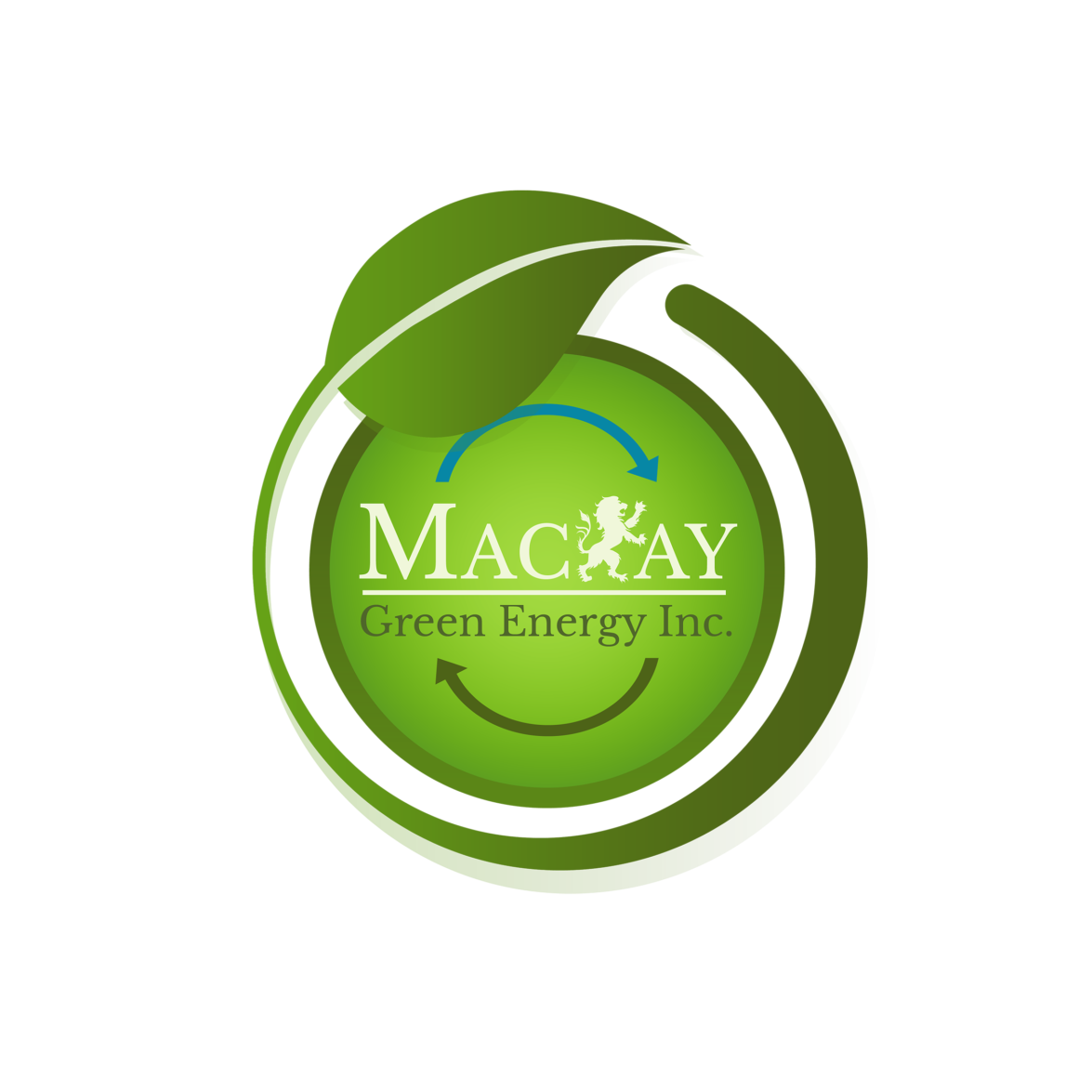PPP to produce a wide range of renewable energy products using Bana Grass
MGE + True PPP
Mackay Green Energy (MGE) is dedicated to developing various renewable energy systems that envision a green future for the Philippines. Founded in 2010, MGE has strived to fulfill its mission of providing complete, sustainable, and integrated solutions through MVBG to the country in the area of renewable energy and green products. The list of green products offered include Bio-coal, Charcoal, Graphene, Bio-Oil, Biomass, Bana Pellets, Bana green coal, Jet fuels, and other forms of Biofuel.
The Philippines is rich with both natural resources and the ideal conditions of soil and climate that makes it the perfect environment to cultivate renewable energy. The Philippines has over 3 million idle lands, all of this combined has given our country the means to place ourselves strategically on the global stage as a leader in high lignin biomass crop production.
MGE, through collaboration with the National Government, LGUs, and the Private Sector, can establish a true Private, Public Partnership (PPP) that is key to transitioning the Philippines into a world exporter of RE products. Through PPP, MGE can better provide jobs, high value energy feed sources, investments, and build a security that can withstand pandemics and trade wars.
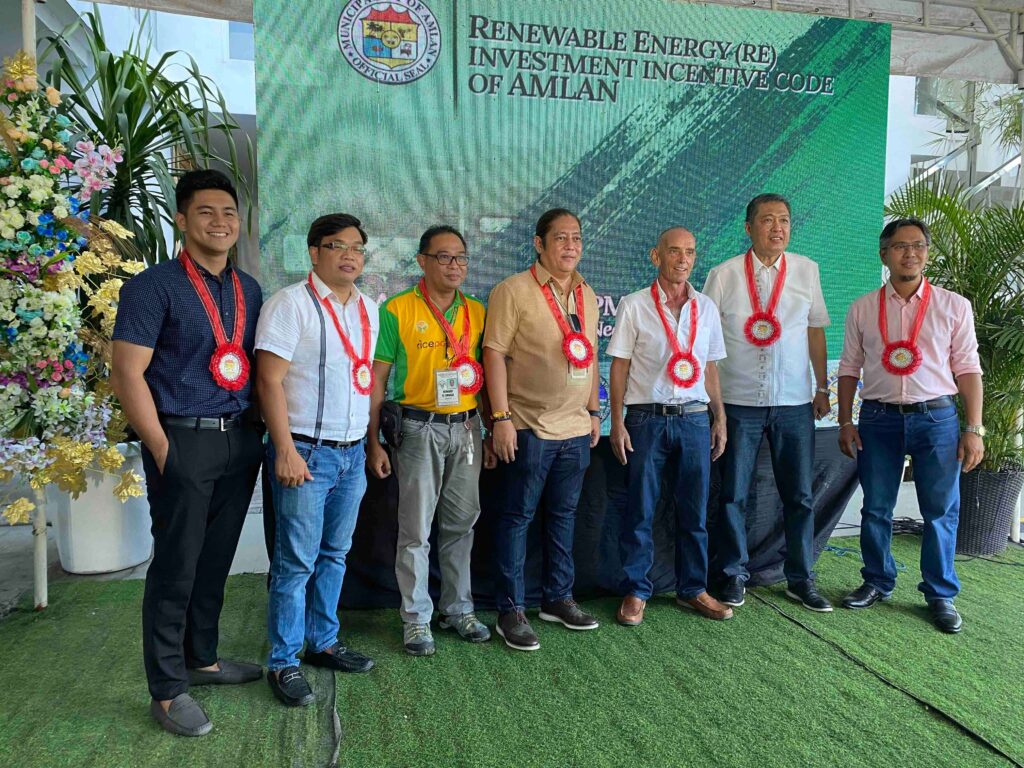
Renewable Energy Incentive Code of Amlan Signing
The Philippines has already invested billions in farm-to-market infrastructure. The green products have to be price competitive for local and export purposes, and be capable of generating jobs that pay top wages. This is possible through PPP. For example, through PPP, LGUs can supply coal power plants within their regions or neighbouring regions to help reduce carbon footprint. These off takes would last up to the lifetime of the plants, which green products could extend for up to 25 years. Local investors can also benefit through access to green bonds or shareholdings that allow them to both enjoy successful investments and support their region. Lastly, the end-users (i.e. the power plants) now have a secure and high quality feed that reduces maintenance costs and subsequently maximises output. On top of all that, the respective parties would also gain further income in the form of carbon credits.
By having active PPP in individual regions, with each producing a commodity for set sectors (be it local or export), the Philippines through PPP will have established a green market with green commodities. In doing so, we tick every box to change the GDP, transforming non-performing lands to performing, converting existing areas into green areas, and generating long-term employment directly and indirectly at all levels.

DENR Visayas with Mr. James Mackay
Technology has advanced to the stage that neighbouring Asian countries are already producing green coal and biofuels. These technologies for the most part can be produced here in the Philippines. This creates other types of indirect employment as well as brings down the cost of the end-product, which combined can help produce power at an affordable rate for people. The key is to produce products at a price where all levels can benefit.
The power plants and production plants all come with an ECC and turn key, so it is no longer a case of “to see is to believe”, it is instead a case of reducing our production costs to save the planet, and looking at how we can work as one to elevate the Philippines to become a leader in RE and RE products.
By going green, we will be able to lower the cost of power, generate tens of thousands of jobs, and establish the Philippines as a leader and not as a follower in the new world of green commodities.
THE PROBLEM
Fossil fuel is the dominant energy source of the Philippines, with the majority – be it oil or coal – being imported. Every year, there is an estimated amount of 14 million tons of coal imported into the country. And the other forms of fossil fuel imports like crude oil or petroleum as well as other fuel imports only add to this number. According to a report by the World bank, the Philippines’ greenhouse gas emissions rank in the top 25 percent among low- and middle-income countries. These numbers are expected to increase significantly in the following decades, with emissions of the energy sector projected to quadruple by 2030.
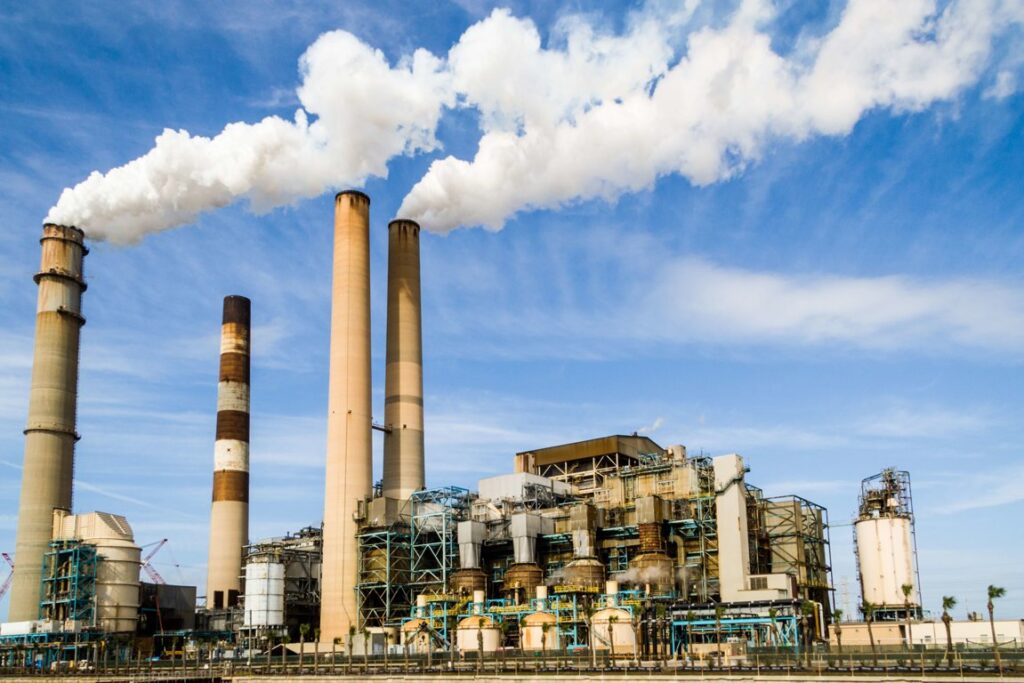
However, there is a way to reduce our carbon footprint sustainably. And that is to make the transition away from using non-renewable energy sources like fossil fuels into alternative energy sources that are both renewable and sustainable. Alternatives that can also provide secure skilled and unskilled jobs.
Previously, there have been attempts to find sustainable bio-alternatives for oil and coal in biomass like wood, coconut, rice hull, lily, and others. However, producing sustainable bio-alternatives is difficult for a variety of reasons. Often, it can be time-consuming, costly, and maybe even conflict with the existing industries behind those resources. Because of this, the Philippines does not have enough high lignin biomass to produce sustainable high-quality feed.
Other renewable energy sources like solar, wind, hydro, and geothermal power also all play major parts in the Philippines’ energy sector but these forms of energy have limited job generations and are unavailable for export.
An alternative that can cover most of the flaws and shortcomings of these previous forms of renewable energy source can definitely help inject positive change into the GDP. This can be achieved by ensuring that change happens at all levels by using the solutions readily available to us– both the widespread use of MVBG and the establishment of a true PPP.
THE SOLUTION
Only with a proven high value biomass crop can you produce products that can compete one on one with fossil fuel.
For the past eight years, Mackay Green Energy has invested over 15 million USD into research and development into a specific variant of bana grass called “Mackay Variety Bana Grass” or MVBG.
MVBG is a dedicated bioenergy crop with the following facts:
- High Lignin Crop / Top biomass crop for the production of bio-oil, fuels, coal, shipping fuel, and jet fuel / price competitive with fossil based fuel or products
- One time planting in 25 years / 360 wet tonnes per hectare
- Price competitive versus fossil based coal
- Same BTU as imported coal / same grind ability
- Production of graphene
- CO2 negative with 255 tonnes/ha/year of carbon credits
- Semi nitrogen fixing
- Non-invasive and requires less fertilizer C 4 plant
- Rich in C6 sugars
- Typhoon, drought and pest resistant
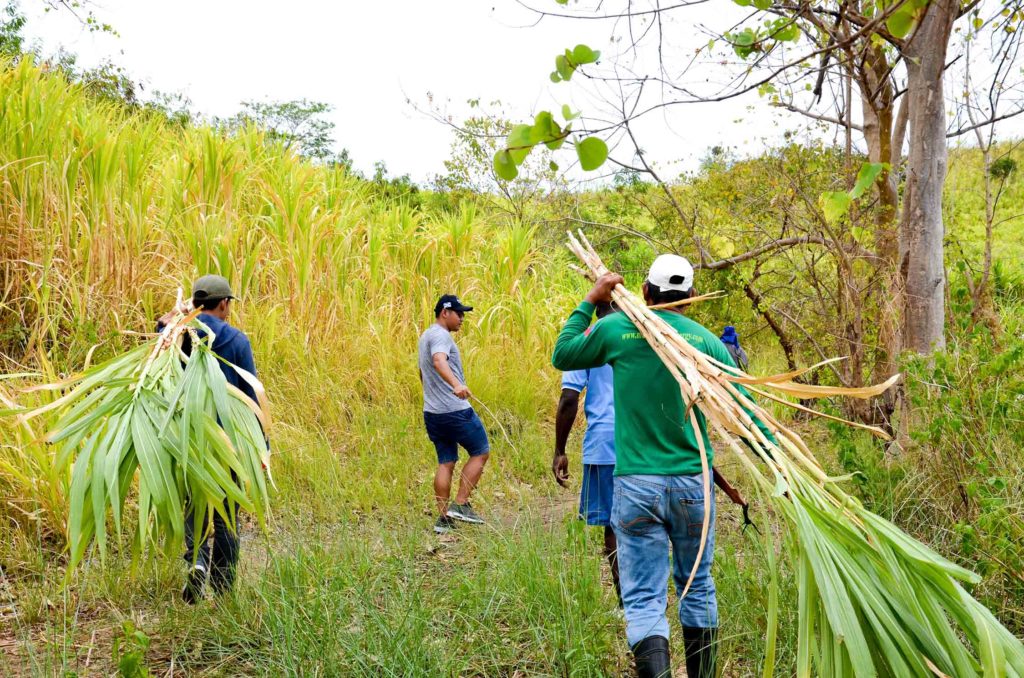
By having a Public and Private Partnership – a true PPP where all parties are granted high security of jobs, feed supply, and investment, with the government giving support in the form of mandating truly renewable energy sources, can the Philippines reach its goal of net carbon and at the same time become a major exporter of renewable energy (RE) products. In this way, positive change can be introduced to the GDP.
With the establishment of a true Public and Private Partnership here in the Philippines, the country would be able to produce a high abundance of top-quality feed source that could invite foreign companies to securely invest here, where they would be able to build their production plants to produce high-quality RE end products that can be shipped back to their home countries.
Farming was and is still the backbone of the Philippines – and through MVBG, we can take this to the next level and make use of the country’s idle lands. Doing so would help all parties reduce their carbon footprint and have a product that’s not only price competitive but also eligible for carbon credits.
WHAT ARE CARBON CREDITS?
Carbon credits was set up by the UN to empower the growth of investment in new RE technology and is a commodity in its own right. Currently, one can get carbon credits through solar, wind power, and biomass. However, the amount gained is minimal when compared to what can be applied to MVBG – where it can generate 255 credits per hectare of plantation. These credits can then be sold to raise the capital to help in the development of individual companies in new technologies. All parties would be sharing an agreed percentage of the carbon credit value. With national government support, power plants would then be able to apply for carbon credits, thus reducing their cost of power.
The Philippines, with its 3 million hectares of idle lands, is a farming powerhouse that can generate a vast amount of green coal and bio fuels. Doing so would produce income from the offtake as well as extra income from the carbon credits.
Currently, the Philippines import 14 million tonnes of fossil coal per year. Producing 10% of that would require 160,000 htr of land, resulting in 40.8 million tonnes of carbon credits with a minimum value based at $20, with a credit income of 816 m dollars per year
In other words, investing in MVBG means creating tens of thousands of jobs and a tangible change in the GDP, enabling the growth of all sectors involved.
Carbon banking and credits is the way of the future.
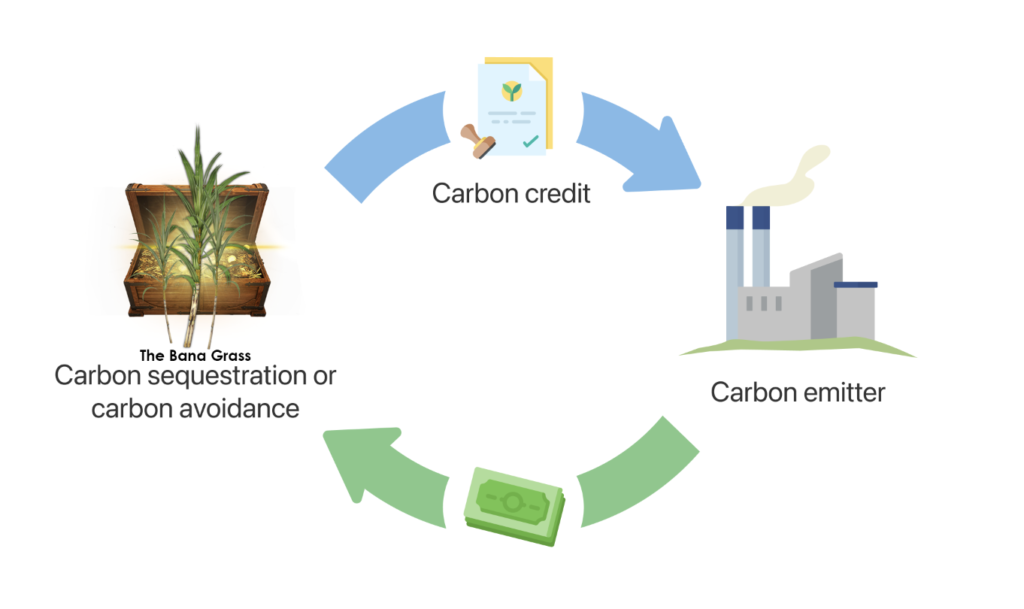
TECHNOLOGY
Technology has advanced to the point that green coal and bio-fuels are being used by neighboring countries in Asia and beyond. The key to reducing the risk of investments in factories and plants and ensuring the maximum probability for success is to have a secure feed source that helps reduce maintenance and maximize output.
Thanks to the ongoing innovations, the Philippines is now technologically capable of processing bana grass and turning it into an effective and sustainable energy source. Bana grass can be processed into green coal that can immediately be used as electricity, and it would be far cheaper than the importing of fossil fuels. If we produce green coal locally, it is possible for the energy sector to make the switch from being reliant on imports to becoming completely self-sustaining.
Through tireless research and collaboration, MGE has worked with the following companies to thoroughly test the use of bana grass: Wageningen University & Research, TU Delft, VT Green, Control Union Certifications, and Celignis Analytical.
MGE looks forward to assisting the Philippines to become a world exporter in RE products. However, a true government-supported PPP is required to make this happen at a nationwide scale.
CONCLUSION
Mackay Green Energy looks to support the Philippines as it becomes a leader in the renewable energy and the carbon banking industry through the licensing of Mackay Variety Bana Grass and the sharing of carbon credits, driving the country to become a major player in the production of green coal and other biomass fuels or products for export and local market.
Mackay Variety Bana Grass, as a dedicated bioenergy crop, is a game changer. With the current world-proven technologies that are off the shelf and readily available in the Philippine market, we will be able to create new sustainable skilled and semi-skilled jobs while simultaneously building on the investment spent and being spent in the road to market, and market to export.
MGE is here to help provide a secure supply of a high-quality carbon-neutral alternative feed source (bana grass), along with all the research conducted, with the goal of sharing knowledge for the success of the nation as a whole in the true spirit of a Private, Public Partnership (PPP).
With the full support and collaboration of the government, energy producers, and private investors, a truly green and sustainable economy can be achieved. We can transition towards a self-sustaining carbon-neutral nation, create a positive impact on the environment and preserve the earth for future generations.


